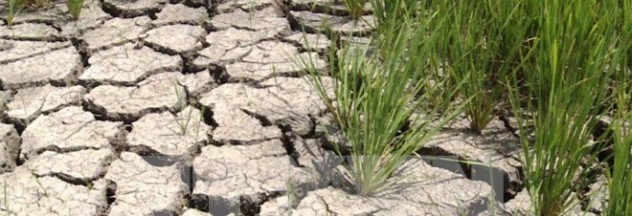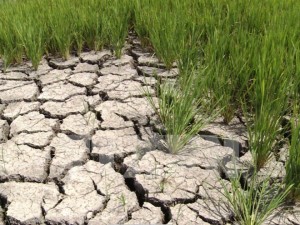Mekong Delta is experiencing grave drought and salinity, causing serious damage to its agriculture. Prime Minister Nguyen Tan Dung has urged all provinces to take necessary measures to solve or the least minimize the critical problem.
The drought and saltwater intrusion situation is so dire that 139,000 hectares of rice crop intended for the winter-spring supply in the whole region have already been destroyed, 34,000 hectares higher than in mid-February. Around 86,000 hectares of the total number is 70% damaged. This data is according to the Ministry of Agriculture and Rural Development. Although farmers have already harvested 40% of the over 1.5 million hectares of the crop for the mentioned seasons, the calamity is still expected to hit another 46,000 hectares of rice in the following months. Another 500,000 hectares or 30% of the rice farming area is seen to be not eligible for harvest in the summer-autumn time.
As of March 2, 49,000 hectares of rice have been devastated in Kien Giang Province, affecting 18,000 households. This is 15,000 hectares and 4,000 households more than last month. In Ben Tre Province, 14,000 hectares of its winter-spring rice crop for 2015-2016 have been ruined by the end of February. In the same month, 49,000 hectares of its rice plantation were also wrecked as well as 25,000 hectares of rice grown in the shrimp farming area.
Meanwhile, seawater has reached not only the rice fields but also the orchards in the province, 1,225 hectares of it. This has resulted in a huge loss of VND200 billion (US$8.97 million). Fresh water supply is also a major problem, as the seawater has affected the river mouths and coastal areas of Ca Mau, Kien Giang, Bien Tre, Tra Vinh, Hau Giang, Long An, Tien Giang and Bac Lieu. This is equivalent to 155,000 households or 575,000 people with not enough safe water supply for a long period of time.
To address the issue, local governments have proposed certain solutions including the construction of seawater control works for emergency cases; and fresh water reservoirs and channels for the local residents. It is also suggested that commercial banks should freeze and reschedule debts for affected farming households and in fact provide loan for them in order to resume production. The Ministry of Planning and Investment proposed for provinces to formulate long-term plans that will enable them to adapt to drought and salinity as well as ask for more funding from the government. Local governments are further asked to look into their already-approved projects but at the same time come up with new ones that are suitable for investment. An Official Development Assistance (ODA) from the government to the Mekong Delta Region in the years to come is also seen as an ideal solution to the rising problem.
The provinces of Mekong Delta have requested help from the government with the amount of over VND1 trillion (US$44.9 million) to cover the losses from the catastrophe. VND50 billion of the whole amount is intended for Long An, VND83 billion for Tien Giang, VND157 billion for Ben Tre, VND70 billion for Tra Vinh, VND219 billion for Soc Trang, VND170 billion for Bac Lieu, VND102 billion for Kien Giang, and VND152 billion for Hau Giang.
The agriculture ministry also asked for a VND10.55 trillion budget from the government for drought and salinity control in the long term which includes VND623 billion for “cushioning impact of drought and salinity, VND215 billion for resuming production, VND650 billion for building dikes to prevent saltwater intrusion and supplying fresh water, more than VND1 trillion for developing drought and saltwater control works in 2016-2020, and VND8 trillion for implementing projects with inter-regional effect in the next five years.
VND524 billion was approved by the prime minister to be allocated to the 39 localities hit by the calamity nationwide. VND140 billion of the total amount went to the affected areas of the Mekong Delta Province. Out of the total 13 provinces of Mekong Delta, six have already declared a state of calamity, namely Tien Giang, Long An, Ben Tre, Kien Giang, Soc Trang and Ca Mau.

